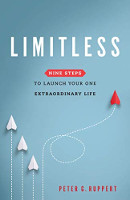
Image by Selver U?anbarli?
It’s sometimes easy to wonder if you have “what It takes;” if you have enough talent or skills to make your dreams happen. All of us have these moments of uncertainty. However, it’s been my experience that hard work always beats talent over the long haul.
Everyone has the ability to eventually master a skill through hard work and effort. Talent might offer an edge initially, but it’s the grit and determination to do the hard work over the long term that makes you successful. While natural talent is important, it’s more important to have a mindset that embraces the importance of hard work and commits to overcoming unhelpful habits and beliefs.
This short research summary provides excellent insight:
Dr. Benjamin Bloom of the University of Chicago conducted a five-year study of leading artists, athletes and scholars based on anonymous interviews with the top 20 performers in various fields, as well as with their friends, families and teachers. He wanted to discover the common characteristics of these achievers that led to their tremendous successes.
He said, “We expected to find tales of great natural gifts. We didn’t find that at all. Their mothers often said it was another child who had the greater talents.”
What Bloom did find were stories of hard work and dedication: the swimmer who performed laps for two hours every morning before school and the pianist who practiced several hours a day for years.
Bloom’s research exemplifies my point: hard work—not great talent—is what leads to extraordinary achievements. It’s quite often not the most talented individual who becomes the star of the team or who becomes the bestselling author. Rather, it’s the one who is filled with determination and dedicates the long hours it will take to perfect their craft, who decides to make their passion a priority, and who is willing to go “all in” to achieve those goals who finishes first.
Overcome Fear: Don’t Give Up before You Begin
It is sometimes tempting to hold back; to not give everything we have to a dream because we’re afraid. We rationalize to ourselves that it is easier to not give one hundred percent because if we fail, we have an “out.” We can then simply tell ourselves and others that things didn’t work out because we didn’t really try all that hard in the first place. Or, we can let ourselves off the hook by telling ourselves it really wasn’t that important to us anyway. These are convenient excuses, born out of fear and insecurities, that never lead to success.
The truth is, there are no guarantees. You could work your hardest, and your plans could still fail. It has happened to me plenty of times. But the only way you’ll ever know whether or not you can make your dreams a reality is by trying, by taking action. If you take yourself out of the game before you try, failure is guaranteed. As I frequently told my kids when they were playing little-league baseball, “If you don’t swing the bat, you are one hundred percent sure of not getting a hit.”
A life spent wondering “What if?” and “What might have been?” is far worse than any one failure.
My Story
I was never a morning person. In college, I never had a class before 9 or 10 a.m. because I disliked getting up early. In my early career, I would hit the snooze button multiple times before finally getting out of bed. So it makes sense that as I moved into my career, exercise was certainly not part of my morning routine.
However, a few colleagues in my YPO peer group had mastered the art of exercising in the morning and encouraged me to consider doing the same. At first, I decided it just wasn’t for me, and, frankly, I completely dismissed the idea. Eventually, though, I decided to at least try it once. I woke up early that next morning, and after working out, I noticed I felt better and had more energy that day. Slowly, I committed to exercising one morning at a time. It took me an entire year to build that habit. At first, I would exercise only once or twice a week, but today, many years later, I exercise five to six mornings a week. The habit has built upon itself and become stronger over time. Today, my morning exercise is the key to starting my day off on the right foot.
The same pattern followed when a friend, a frequent marathoner, encouraged me to run a marathon over a dinner one night. At first, I got excited about the idea, but then the enormity of the goal set in and I didn’t do anything about it. I had been a periodic runner for quick exercise and to stay in shape, but never more than a few miles at a time. Running 26.2 miles simply seemed out of reach for me. The idea continued to gnaw at me though. Eventually, my friend suggested to just look online for marathons that might at least be of interest (that critical “first step”!).
We found one in Cincinnati—my hometown—and the idea of returning home to run a marathon started to intrigue me and I committed to it. So first, I started running for exercise to get back in shape again. I ran three miles. After a few weeks, I pushed myself to five. Then I told myself if I could run five miles, I certainly could do six. I slowly built my endurance, and as I moved into longer training runs of fifteen, eighteen, and more than twenty miles, my friend and I ran together as we both trained for marathons taking place at approximately the same time.
Before I knew it, at age forty-three, I had gone from rejecting the idea to completing my first marathon in my hometown of Cincinnati.
This is a key part in the process of reaching any difficult goal or dream. We start with an interest or idea that seems daunting or out of reach. We often dismiss it initially, but we continue to think about it, see the benefits and become interested enough to commit to it. But, despite that commitment, we are not really committed.
We are only partially committed until we actually take that first step by doing a bit of research, or going on that first run, or making a call or setting a meeting. After that, we move to the next step. Eventually, these first steps build on themselves, create momentum and help us fully embrace accomplishing the goal. From there, we might push ourselves to take an even bigger leap.
Practicing this process—of taking that one first step and then a second step—teaches us that it is possible to get beyond our doubts and fears and move toward the kind of limitless life we’ve imagined. Setting a big goal is worthless unless and until we take those first critical action steps. Inaction significantly multiplies fear and hesitancy. Taking positive action unleashes the tremendous human power within all of us.
The marketing guru Seth Godin once described a potential opportunity like a blank check in your wallet. In one of his great blogs, he said:
A check in your wallet does you very little good. It represents opportunity, sure, but not action.
Most of us are carrying around a check, an opportunity to make an impact, to do the work we’re capable of, to ship the art that would make a difference.
No, the world isn’t fair, and most people don’t get all the chances they deserve. There are barriers due to income, to race, to social standing, and to education, and they are inexcusable and must fall. But the check remains, now more than ever. The opportunity to step up and to fail . . . until we succeed is greater now than it has ever been.
As Martin Luther King Junior spoke about a half a lifetime ago,
We are now faced with the fact, my friends, that tomorrow is today. We are confronted with the fierce urgency of now. In this unfolding conundrum of life and history, there is such a thing as being too late. Procrastination is still the thief of time. Life often leaves us standing bare, naked, and dejected with a lost opportunity. The tide in the affairs of men does not remain at flood—it ebbs. We may cry out desperately for time to pause in her passage, but time is adamant to every plea and rushes on. Over the bleached bones and jumbled residues of numerous civilizations are written the pathetic words, “Too late.”
Your Turn
The first step in facing our fears is acknowledging they exist. List any activities you’ve been afraid to try or goals you’ve avoided setting because you’re worried you might fail:
________________________________________
________________________________________
________________________________________
________________________________________
Now, list the specific fears or concerns that would be holding you back from trying these activities or pursuing your goals:
________________________________________
________________________________________
________________________________________
________________________________________
Action Steps
Once we’ve acknowledged and named our fears, we can face them, one by one, by taking action. The smallest step forward is often the most important step!
Write down a dream or goal or activity that’s important to you and list three immediate actions you can take to start down the path. Make sure these actions are manageable, easily accomplished and not overly intimidating.
Goal:
_________________________________ _______
_________________________________ _______
_________________________________ _______
First action steps:
_________________________________ _______
_________________________________ _______
_________________________________ _______
Set a date to complete each of these small actions and hold yourself accountable by sharing your list with a friend or champion.
Action Plan:
What is one first action step you can take this week toward your goals?
1. ________________________________________
Who might provide a friendly ear to share your idea? Make a plan to connect with that person.
________________________________________
Once you’ve taken your first action step, begin mapping out what you think might be steps two, three and four. Write as many steps down as you can think of. Doing this will help you break your big dream down into smaller steps that feel more manageable.
2. ________________________________________
3. ________________________________________
4. _______________________________________
©2020 by Peter Ruppert. All Rights Reserved.
Reprinted with permission of the author.
Publisher : Credo House Publishers
Article Source
Limitless: Nine Steps to Launch Your One Extraordinary Life
by Peter G. Ruppert This book was written for those, young and old, who simply don’t want to settle for the status quo or for “good enough” and have dreams they want to chase, not give up on. Based on research of accomplished people and his own personal experiences of successes and failures, Peter G. Ruppert provides a step-by-step guide to help readers positively impact the trajectory of their own future.
This book was written for those, young and old, who simply don’t want to settle for the status quo or for “good enough” and have dreams they want to chase, not give up on. Based on research of accomplished people and his own personal experiences of successes and failures, Peter G. Ruppert provides a step-by-step guide to help readers positively impact the trajectory of their own future.
Filled with real life examples for each step, extra learning resources to dig deeper, and a workbook style recap after each chapter, Peter Ruppert provides a simple yet powerful program so readers can launch their own limitless life.
For more info and/or to order this book, click here. Also available as an Audiobook and a Kindle edition.
About The Author
 Peter Ruppert is founder and CEO of i-Education Group, which operates over 75 Fusion and Futures Academies for grades 6-12 in one student, one teacher classroom environments. A 20-year veteran of the education industry, he’s opened over 100 schools and acquired more than 25 others. He’s been president and CEO of organizations in the private school, charter school, and early education industries, and sat on his local public school board for 5 years.
Peter Ruppert is founder and CEO of i-Education Group, which operates over 75 Fusion and Futures Academies for grades 6-12 in one student, one teacher classroom environments. A 20-year veteran of the education industry, he’s opened over 100 schools and acquired more than 25 others. He’s been president and CEO of organizations in the private school, charter school, and early education industries, and sat on his local public school board for 5 years.
Learn more at https://peteruppert.com/




























